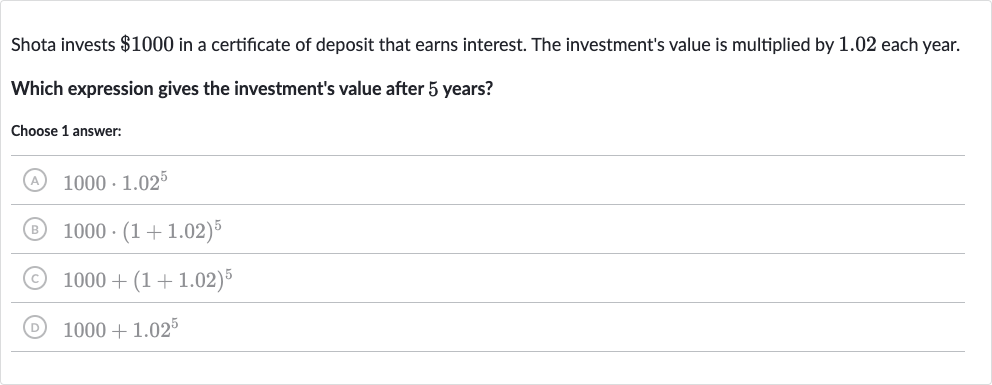Full solution
Q. Shota invests in a certificate of deposit that earns interest. The investment's value is multiplied by . each year.Which expression gives the investment's value after years?Choose answer:(A) (B) (C) (D)
- Understand the problem: Understand the problem.We need to find the expression that represents the value of an investment after years, given that the investment increases by a factor of each year.
- Identify the correct formula: Identify the correct formula for compound interest.The value of an investment that earns compound interest is calculated using the formula:Final Value = Initial Investment In this case, the interest rate is or , and the number of periods is years.
- Translate the information: Translate the information into the formula.Using the formula from Step , we can write the expression for the investment's value after years as:Final Value = Simplify the expression inside the parentheses:Final Value =
- Match the expression with the given options: Match the expression with the given options.The expression we found in Step is , which corresponds to option .
More problems from Compound interest
QuestionGet tutor help
QuestionGet tutor help
QuestionGet tutor help
QuestionGet tutor help
QuestionGet tutor help

